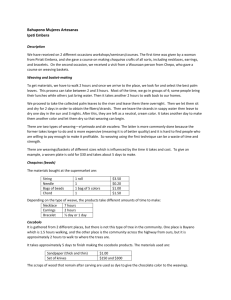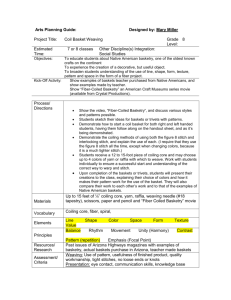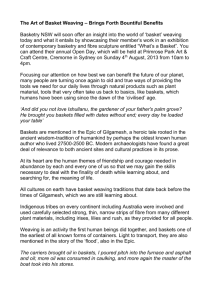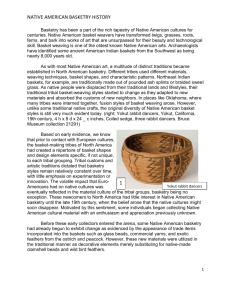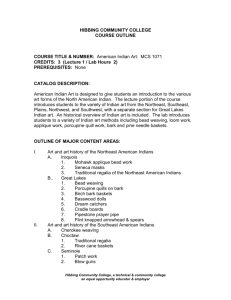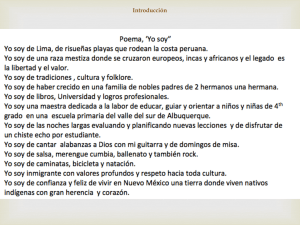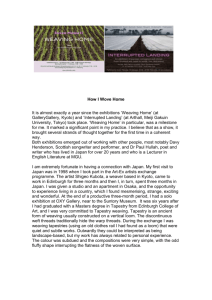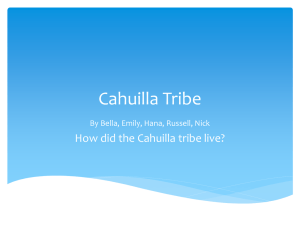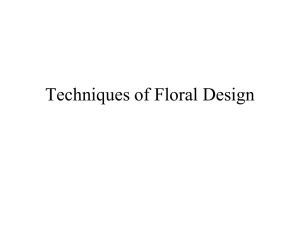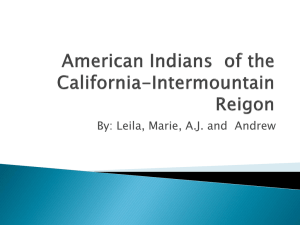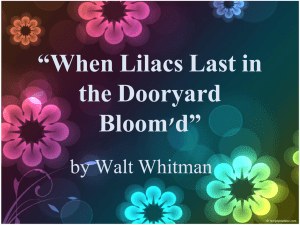Agriculture and Industry.eva
advertisement
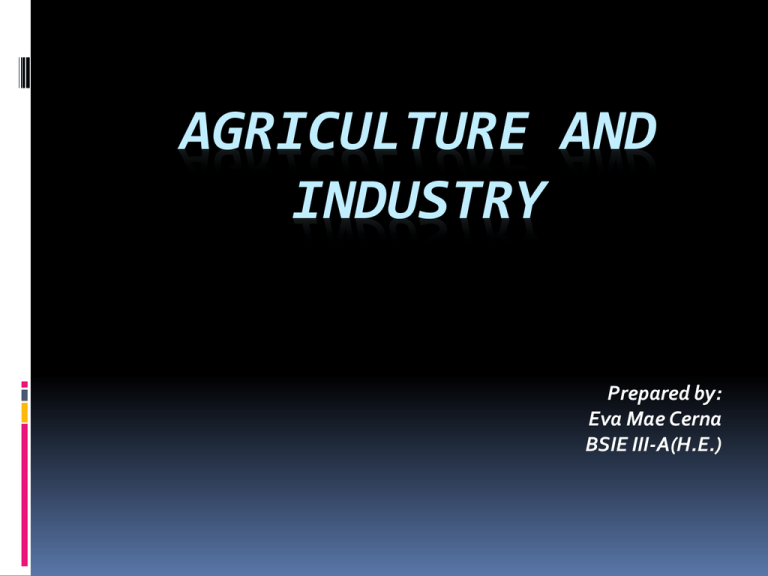
AGRICULTURE AND INDUSTRY Prepared by: Eva Mae Cerna BSIE III-A(H.E.) INDUSTRIAL PLANTS USED IN BASKET MAKING The weaving of vines , twigs, grasses, roots and other such materials into containers or baskets is called basketry. basketry was one of earliest kinds of craftwork of primitive people. The ancient Chinese and Japanese were famous of their beautiful baskets. The early Filipinos also developed basketry as primitive craftwork which has been handed down from generation to generation. Industrial plants: where found: classifications There are many industrial plants found in the Philippines, growing on forests, swamps, hills or plins are excellent materials for basketry. These plants are generally classified into ferns, pandans, grasses, bamboos, sedges, palms, rattans, and vines. They are scattered over a large territory, growing with other species of plants. 1. Ferns – are group into two kinds, namely; twining and nontwining. Nito belongs to the twin group and locdo, kilog, alolocdo, and jagnaya are non-twining. a. Nito – there are about ten different kinds of nito found in the Philippines. Nito climbs and twines around plants. It loses many of its leaves as it grows and its stem become discolored. The color changes from green to light green to dark brown and finally to black. Nito grows best in moist, shaded places where timber is not very thick. b. Locdo – this plant grows in shaded places on hillsides and valleys. It grows to about a meter or more in height. To make use of locdo, the hard, outer covering of the stem is cracked or crushed. From the soft , light brown inner tissue of the stem, the dark brown ribbon like splints are pulled out. The splints are good materials for coiled baskets. c. Alolocdo – this plant is similar to locdo, but it grows best in dry thickets. To obtain the fibers, the stem is cracked and the inner fibers are pulled out. At first they are white in color but they soon turn brown. d. Jagnaya – this plant is found chiefly in thickets and in lowlands near the sea. Ordinarily, the stem is dried in the sun before it is used. 2. Pandan – it is also called screw pine, is a tropical shrub. It is called screw pine because its leaves are similar to those of the pineapple and grew from the stem in a corkscrew fashion. Pandan grow best in sandy beaches, in some what moist localities, on the sides of mountains, near fresh water lakes and swamps. a. Karagumoy - the leaves of this plants are coarse. They are split while they are fresh and then press as they dry. This strips are used for weaving mats, hats, bags or work basket. b. Common pandans – abundant in our country but they are not of the products woven from pandan strips. c. Sabutan – this plant is of great value. Its preparation is similar to karagumoy. Its color is light gray when not bleached. Hats made of sabutan are strong and very well suited for tropical wear. 3. Grasses – under this group the plants which have economic value are vetiver and tambo. a. Vetiver – this plant grows wild in open wet lands, on banks of rice paddies and dikes. The roots are prepared for use by dipping them in water for about 20 minutes. These roots are used for weaving fans because of their agreeable odor. b. Tambo – this plant is wildly distributed in our country but it grows best in Bataan. It is found growing on damp grows along streams or other waterways. Tambo is best used for making brooms. 4. Sedges – grow on wet ground. They resemble grasses. Some of the species under this group are balangot, tikug, agas, tikiw, tiker, and matting rush. a. Balungot – it is found in brackish swamps and along tidal streams. Its principal use is for making slippers and hats. b. Tikug – it grows wild and in great abundance in marshy places and on around rice paddies. The preparation of tikug for industrial use consist of drying and bleaching the straw in the sun. the process generally takes from 7-10 days. Tikug is used for making mats which are superior to buri mats. 5. Palms – palms are of considerable economic importance, not only for the valuable food products they yield, but also for the industrial fibers obtained from their leaves, midribs and petioles. a. Areca nut – the sheath at the base of the leaf petioles and the bracts which protect the flower cluster and fruit of the areca nut are very useful. When dried, the sheathes are used for the soles of the slippers and linings of handbags. b. Dumayaca – used for making different kinds of baskets including lunch basket. The splints are good for both weavers and spokes of baskets. c. Buri palm – many industrial materials are derived from buri palms. The young leaves can be made into strips. Raffia is the skin stripped from the leaf segments of the buri shoots before the blade has unfolded. It is an excellent material for making coiled basket. d. Sugar palms – splints from sugar palms make excellent weavers and spokes of baskets. They can also be used in weaving baskets and paper trays. The fibers are used for making brushes. e. Palma Brava – the leaves of this palm are used for making salacots (native hats). The leaves are commonly used as roof thatches. The midribs are also used for making baskets, brooms and trays. Forms of Basketry Weaving Generally speaking, there are two forms of weaving: namely; soft strip weaving and hard strip weaving. Hard strip weaving ussually requires materials like bamboo, banban, rattan, nito, raffia, buri, pandan, balangot, buntal and other such materials. The foundation pieces on which the weaving of the bottom of a basket is done are called spokes that are woven with the spokes and stakes are called weavers.
